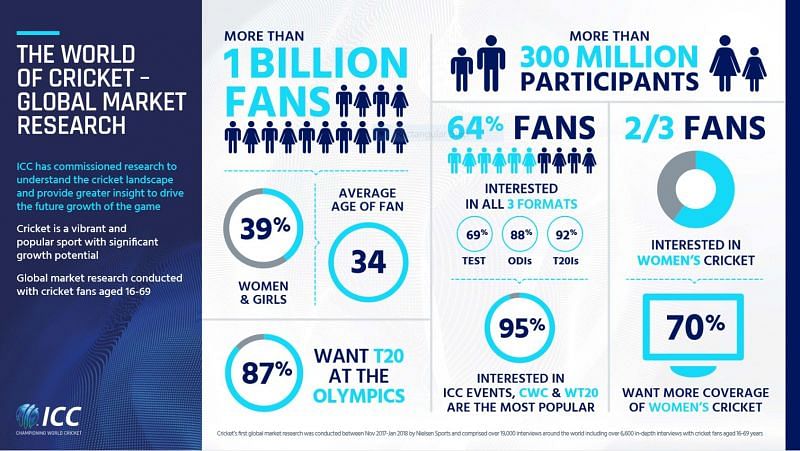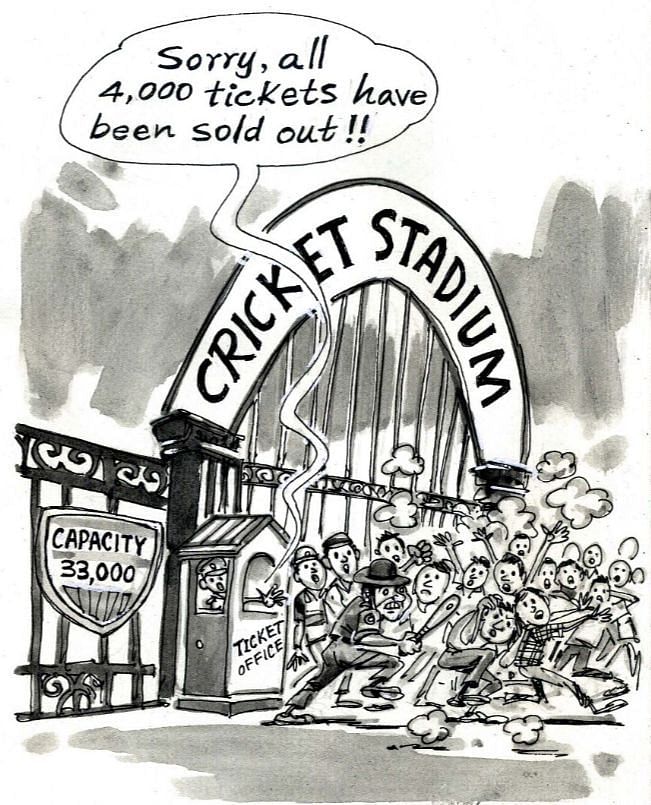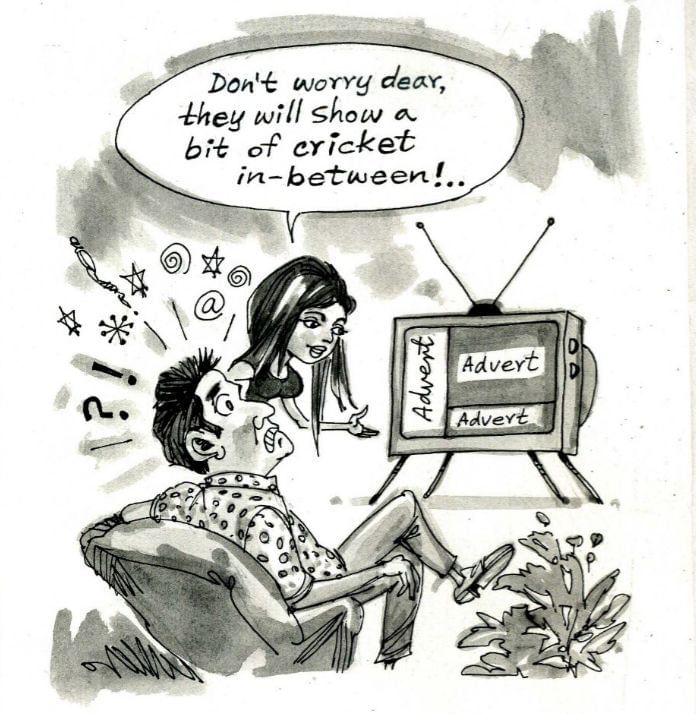
Expert Opinion: Fans deserve greater respect and dignity - Ranjan Mellawa

Analysis of rudimentary market research carried out by the ECB in the early 2000s gave birth to the entertaining and lucrative T20 format. Such surveys, though few and far between, had provided useful feedback for administrators to action.
Likewise, businesses employ a range of techniques to listen to their customers. Regular analysis of fans’ experiences at the ground, on TV, or listening to radio commentary would no doubt enable administrators of the game, make better decisions and choices.
Take Sir Richard Branson, also a cricket fan, who commissions mystery shopping as a strategy to monitor the service standards of his massive Virgin Group. Similarly, cricket administrators would get a real feel of things if they were to spend a day at a game sans air-conditioned boxes, catered food, reserved parking and by queuing up like mere mortals. They can then take note of the improvements required to make attendance at the game a lesser ordeal and a real pleasure for the ordinary spectator.
More than a decade and a half since the said survey, the ICC confidently espouses that the results of its recently concluded market research would duly; "enable the ICC and its Members to understand the growth potential of cricket, help shape the development of the growth focused global strategy for the game, drive decision making and to provide a benchmark upon which to measure the outcomes of the strategy."
"A global growth strategy for cricket is currently being developed, and this research is a significant cornerstone of that," says its Chief Executive David Richardson.
Broadcasting rights and sponsorships generate big-time revenues for governing bodies worldwide. Of course, broadcasters earn money from on-air advertising and by redistributing broadcast rights. Sponsors promote their brand and image; some even make their merchandise available at the venue itself. Many forget that fans are the captive audiences of these campaigns, who will ultimately bear the brunt of the costs.
While lauding such an approach towards the most important stakeholders of the game, let us take a pragmatic view of the outcome of the survey itself. Very little other than the illustration given above has been released by the ICC so far. It seems the published results are limited to quantitative aspects of fandom. Does the ICC finally have a better understanding of fans’ viewing experiences either as spectators or TV viewers and if so, to be in a position to recognise the shortcomings and their aspirations? Is it wishful thinking to expect a comprehensive qualitative outcome too?
If not, it’s time to remind the mandarins…
Millions of fans especially those on the subcontinent have endured the tedium of long queues, exposed to the elements, at times braved stringent measures by the authorities, to buy tickets literally at any price.

Within the grounds, they are charged exorbitant prices to buy ‘sponsored’ food, drinks, and water. Despite this, the average fan’s loyalty leads to buying replica team clothing with sponsors’ emblems, thereby providing free advertising leeway for the sponsors.
At some international venues, especially the sub-continental ones, woe unto those who leave their seats to have a drink, snack or visit the washroom, for they would have lost their seats for the day!
Facilities for the differently-abled are the sine qua non the world over, and most organisations now cater to their needs by compulsion of law. Even so, plenty of international cricket venues around the world seem to have lost their way in accommodating them with dignity.
On being elected BCCI President in 2016, Anurag Thakur said:
"The first thing I said on taking over as president is that we want to enhance the fan experience. Whether it is to have a separate area for old or specially-abled people, 10 percent tickets to students especially during Tests, clean stadiums, and green stadiums… We will do whatever is required for the fan. For example, seat numbering. Anyone can say, what is the big deal in this? But for someone who buys a ticket and goes to the ground and doesn’t find his seat, it is a big deal. This may look small, but I have said, without seat numbers associations won’t get games."
Many fans who subscribe to pay-TV channels are resigned to watching the action mostly on a three-quarter screen and missing out on some key moments of the game as well.
Broadcasting rights and sponsorships generate big-time revenues for governing bodies worldwide. Of course, broadcasters earn money from on-air advertising and by redistributing broadcast rights. Sponsors promote their brand and image; some even make their merchandise available at the venue itself. Many forget that fans are the captive audiences of these campaigns, who will ultimately bear the brunt of the costs.
Have the broadcasters or sponsors ever been held to account to provide the best value for the end customer, i.e., the fan? The answer may be a bitter pill to swallow. Shouldn’t national boards and the ICC call for specific value propositions for viewers, to be built into broadcasters’ bids as a condition for considering TV rights?

A three-member committee headed by former chief justice of India R. M. Lodha was appointed by the Supreme Court of India to report on the functioning of the BCCI.
The report submitted to the Supreme Court in January 2016 stated:
"Commerce has also overtaken the enjoyment of the sport, with advertisements continuing many a time, even after the first ball and again commencing even before the last ball of the over is played, thereby interrupting the full and proper broadcast of the game.
It is recommended that all existing contracts for international Test & One-Day matches be revised and new ones ensure that only breaks taken by both teams for drinks, lunch, and tea will permit the broadcast to be interrupted with advertisements, as is the practice internationally. Also, the entire space of the screen during the broadcast will be dedicated to the display of the game, save for a small sponsor logo or sign."
Surely, no right-thinking individual would disagree with Justice Lodha.
Ticketing and parking issues, hot-headed security frisks, noisy and sometimes rowdy crowds have all replaced the serenity and purity of yesteryear. Times change, yes, but shouldn’t the game’s enduring values and the average fan’s right to comfort and appropriate entertainment be preserved and fostered?
The average fan’s tenacious love and undying support for the game shouldn’t be misinterpreted to denote membership of a motley crowd, assembled only to cheer and jeer. Unlike for any other product or service, the ‘consumers’ of the sport – the fans – provide the ‘spend’ but meekly accept anything in return. It’s crystal clear that together with the players’ skills and efforts, fans’ money and attention are indispensable to sustain the game. Shouldn’t they be granted opportunities to share their voices and, above all, to be heard? However, most administrators tend to turn a Nelsonian eye towards followers of the game, either by design or by apathy and remain silently in their comfort zones.
It’s time for fans to transform themselves from consumers to guardians of the sport. In the case of administrators and broadcasters, never fear, there are plenty to choose from.
As commercial interests have overshadowed the true spirit of the game and fans, in general, have become a neglected lot. Don’t they deserve to be treated with greater respect and dignity? Should they resort to re-arranging their entertainment priorities for the administrators to sit up and take note? When that happens, it may be too late to woo them back, just as in a marriage.
Kumar Sangakkara had this to say in his 2011 Cowdrey Lecture:
"Loyal fans are becoming increasingly disillusioned. This is very dangerous because it is not the administrators or players that sustain the game – it is the cricket-loving public. It is their passion that powers cricket and if they turn their backs on cricket, then the whole system will come crashing down."
ICC is confident the survey results would help it and its Members ‘in shaping and implementing their fan engagement strategies and clearly presents cricket as a vibrant and popular sport globally’.
Renowned sports broadcaster Alison Mitchell recently tweeted, calling on the administrators, to create "an inviting match day experience for new fans: ease of getting to and from grounds/seat, quick serving food/drink, pleasant toilet/changing facilities, dedicated buggy and wheelchairs spaces. See fun on TV, come once, come again."
Over to the administrators: pay attention to detail, the game’s future is in your hands, now more than ever before.